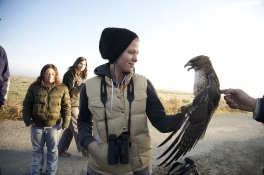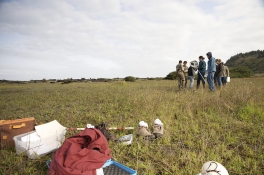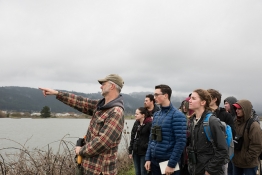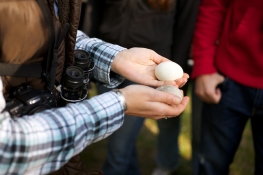Wild Goose Dilemmas
Description
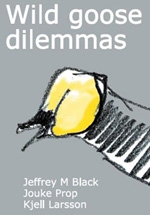
A culmination of over 25 years of barnacle goose research, with old highlights and new and exciting findings. This book is about an amazing array of individual characteristics that exist in barnacle goose societies - characteristics that yield different abilities when surviving breeding attempts and long migrations. Describing their many qualities and attributes, from mate choices to habitat preferences, the authors provide insight into the rich lives of these social animals. Wild geese face one dilemma after another regarding ways and means for making ends meet. The story line focuses on two populations. One has recovered from its once threatened status and the other is equally remarkable, having abandoned an arctic lifestyle in favour of southern nesting areas.
Vitals
- Population consequences of individual decisions in barnacle geese
- By JM Black, J Prop & K Larsson
- Available in North America ($35 + p&p) online at the Humboldt Bookstore and in Europe
Table of Contents
- Introduction: wild goose dilemmas
- Study populations and study sites
- Research techniques
- Pair formation and mate selection
- Family dynamics
- Long-term partnerships
- Beyond the pair bond: nest parasitism, adoptions, and kin clustering
- Body size: correlates and consequences
- Food exploitation
- Survival and reproduction
- Scheduling the annual cycle: correlates and consequences
- Exchange among populations
- Population dynamics
- Dispersal and colonization
- Wild geese in natural and agricultural landscapes
- References
- Subject index
- Online appendix
The authors describe a range of behavioural strategies that individuals employ in order to successfully breed and survive. The study is one of social evolution and population biology driven by natural, sexual and kin selection. The study culminates in the description of how the individual strategies interact to shape the demography and distribution of the Svalbard population and provides information for the formulation of an international conservation/management action plan for the population.
Book Reviews
I would further recommend it (Wild Goose Dilemmas) as a fascinating review of how a very detailed long-term study of a single species can produce valuable and thought-provoking results, which are much more widely applicable. Malcolm Ogilvie Ibis (2007), 149:858–876.
The temporal and geographic scales described in this book are truly amazing. Unique among life-history studies, the authors tie variation in life-history strategies back to foraging ability and nutrient intake. I am unaware of another study that has attempted such a comprehensive analysis of a wild species. The book provides detailed underpinnings for behavioral and life-history strategies, natural selection and individuals’ environments. I enjoyed this book thoroughly and highly recommend this delightful and stimulating work. Jim Sedinger, ISBE Newsletter (2007) 19:15-16.
Wild Goose Dilemmas — is written in an accessible, vivid style to attract a broader audience, including students attending courses in ecology and population biology. The timing of publication is perfect. For all dedicated goose watchers, … the book is an excellent opportunity to upgrade their knowledge and understand the drivers of thriving goose populations. Kees Koffijberg, Ardea, 95, 157-158.
Jeff Black and his colleagues have produced a remarkable and delightful book providing one of the most detailed examinations of the biology of a long-lived (up to at least 24 years) species published to date. Any outstanding book will not only address important questions in biology, but will stimulate debate and new research. This book accomplishes all of these. The detailed data at multiple levels of study about so many important questions make this book essential for all those interested in waterfowl. Insights about mechanisms of life-history evolution and population regulation also make this book important for those with theoretical interest in population biology, or evolution, or those with interest in management of wildlife populations. I strongly recommend this book to all of you. Jim Sedinger, Wildlife Professional TWS Magazine- Dec 2007

